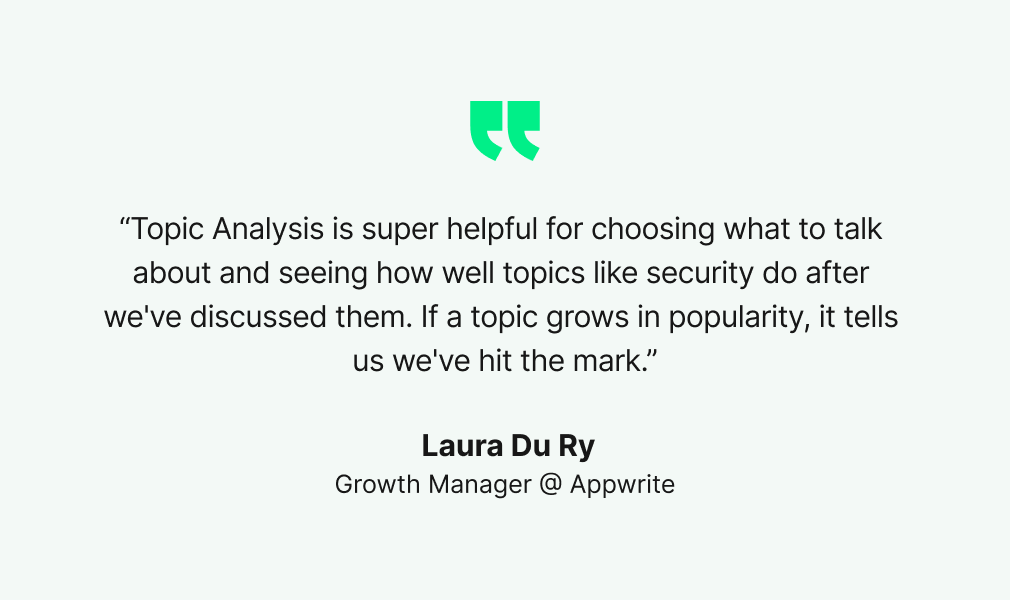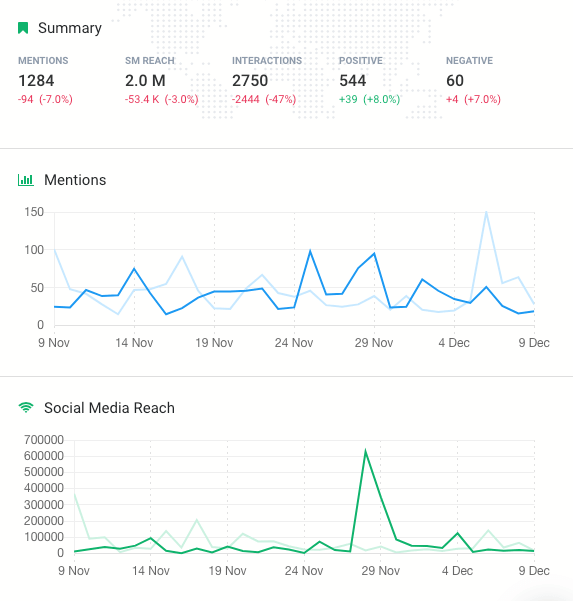How to Manage Your Online Presence?
Table of contents
Your brand is present online in owned and earned media. Owned media are easy to manage — you have full control over what and when you publish. It’s different when it comes to earned media. To manage your online presence, you have to take a look at all the messages and posts about your brand written by other users.
Managing your online presence is an all-encompassing project that needs your constant attention. It’s not an easy task, especially in our constantly online world. You have to keep a finger on the pulse all the time.
To build a professional online presence for your brand, you need a strategic and comprehensive approach. The growth of social media sites, search engines, and development of various search engine optimization techniques give you an opportunity to position your company, product, or service online and reach brand new audiences.
How do you benefit from what the Internet has to offer? I hope I’ll explain it in this blog post.
Here’s what I cover in this post:
What is online presence management?
There are many definitions of online presence management, but they all have a few things in common.
To make sure we’re all on the same page, let’s establish what online presence management means.
Online presence management involves many different actions and processes, but there’s one ultimate goal — to drive visitors to business’s various online channels.
Online presence management includes:
- web design
- SEO
- content creation
- brand reputation
- PPC and other forms of advertising
- reputation management
- link-building
- content marketing
- social media marketing
The proliferation of available channels and online marketing methods made web presence management an interesting task.
On the one hand, there are a lot of channels and social media platforms where you can reach your target audience. The increase in the number of channels means you can get your message to a wider audience.
On the other hand, the number of online channels makes it hard to keep track on all the social media mentions regarding your brand, product, or service.
How to manage your online presence?
If you have an online profile on any social network, website, blog, or forum, you maintain an online presence.
If you don’t, you can encounter two problems.
Firstly, you’re missing out on a huge potential market. People interested in your product are looking online for a solution to their problems. That’s an opportunity for you to act. This technique is called social selling.
Secondly, many Internet users will talk about your business online. If you’re not present there, they will talk behind your back.
Your online reputation is on the line. That’s one of the most valuable assets you have.
To get the most out of your online presence, you need a set of tactics that will help you maximise the benefits of online presence.
Online presence management in details
You can divide the online presence into two categories:
- owned social media presence which means all the posts on the channels that you run and have control over;
- earned social media presence which means all the online mentions on other channels, for example, blogs, forums, social media profiles run by people not related to your company.
Both of these worlds need separate online presence management tactics.
Let’s dive in and start with owned online presence!
Prepare a style guide for your online channels
Consistency is one of the keys to a successful online presence. That statement is true on almost everything you do to build your online presence — starting with regular posts to end with visuals.
The lack of consistency in your online business endeavours might be the first challenge you encounter while building your digital presence, especially if you pass the responsibilities to another employee.
The best solution is to prepare a style guide that will apply to all online activities.
An online presence style guide ensures two things:
- all of your social media accounts are easily distinguishable and can be associated with your brand
- no matter how many people handle your online activities, all will be well-informed on what the tone of voice, graphics, gifs, etc, to use.
What should a comprehensive style guide include? Everything that will make the job easier!

Start with the basics:
- how do you spell the name of your brand/product?
- what set of colours do you use for your brand?
- what font will you use in your online communication?
Once you establish the principles, you’ll be able to move on and add other details to the style guide.
Another part of digital presence management is preparing a tone of voice guide.
A tone of voice guide determines how you talk about your company online. Is the tone more relaxed or serious? Do you pop in occasional joke? What’s your sense of humour?
Putting together all the information in a form of a brand book will ensure that no matter who runs your online communication, the message will be consistent.
Determine the frequency of posting new content
Once you know what and how to communicate, you need to determine how often you want to reach out to your audience.
It’s important to stick to regular posting times. That way, you can build up your profile and attract new followers.
The more interactions your posts receive, the bigger the chance a social media algorithm will favour your content giving your account more organic exposure.
Once you post some content online, take a look at what sparks the highest number of engagement (likes, comments, and shares) and try to emulate this type of content.
Get to the top of search engine results
In order to increase your online presence, it’s crucial to be visible on search engines. The higher your website ranks in search engine results pages (SERPs), the more likely people are to find you.
There are two main ways to achieve a high ranking on search engines: search engine optimization (SEO) and search engine marketing (SEM).
SEO involves optimizing your website and its content to improve its relevance and authority in the eyes of search engines. This includes things like keyword research, on-page optimization, link building, and content creation.
SEM involves placing paid advertisements on search engines (most commonly Google Search) to appear at the top of search results pages for certain keywords. This can be an effective way to drive traffic to your website and increase your online visibility.
Both SEO and SEA can be complex and time-consuming, so it’s often worth investing in a professional service to help you with your digital presence management.
Online presence management and brand reputation
Other aspect of online presence management is brand reputation.

Discover our client’s success story — read the case study.
People will talk about your brand online. It’s your job to find the mentions and react.
That’s the way to protect online reputation, which is a vital part of online presence management.
Nowadays, one tweet with a negative sentiment, if it goes viral, could shatter your brand reputation. Decrease in the level of trust will result in the decrease in the sales numbers.
What are the tactics to protect brand reputation?
The most important rule of brand reputation protection is spotting as many mentions as possible about your brand.
The best way to do that, is to use a media monitoring tool, for example, Brand24.
The media monitoring journey starts with creating a project.
In the project creation wizard enter the keywords you’d like to monitor. When it comes to monitoring, the sky is the limit!
When it comes to brand protection, think about monitoring terms closely related to your company, such as:
- the name of your brand
- the name of your product or service
- your branded hashtag
- your campaign-specific hashtag
- terms related to your industry
From that moment on, a brand monitoring tool will start collecting publicly available online mentions.
That gives an idea of the chatter about your brand outside the owned channels.

To successfully build an online presence and protect brand reputation, you need to react to online mentions. Foremost the negative mentions, to either prevent the spread of information or to turn the tables around and make the negative comment work in your favour.
To react in time, set up notifications.
Brand24 offers different types of notifications. Choose the one that suits your needs the most.
When it comes to notifications, you can opt for:
- Slack notifications — you can connect a media monitoring project with a dedicated Slack channel
- in-app notifications — Brand24 offers an app both for iOS and Android
- email reports — every time there’s an unusual spike in the number of mentions, you’ll receive an alert. We’ve just redesigned the alerts, so you get all the data you need in the most legible way.
Media monitoring will give you additional information you can use to adjust your message. Think about information about sentiment analysis, estimated social media reach, or number and types of interactions.
This type of information will give you insights into your brand messaging.
Try brand monitoring for free! We offer a 14-day free trial (no credit card required).
Online presence management in a nutshell
Online presence management seems like a complicated task.
It can be one.
But you have to start somewhere. Working on the basics will help you tackle the right issues right in the beginning.
Online presence management is all about your online appearance. In the beginning think about the visuals — what photos are you going to use? How will your message sound like? It’s best to answer those questions before you start developing your online presence.
You also have to keep a finger on what others say about your company. Some of the posts will go viral. It’s your job to contain negative exposure and promote the positive talk about your brand.
FAQ
What is online presence definition?
Online presence refers to the collective online activities and visibility of an individual, business, or organization. It encompasses all the digital touchpoints where a brand or individual interacts with their audience, including social media profiles, websites, online directories, and other online platforms. Managing your online presence effectively is essential to building and maintaining your brand’s positive reputation and visibility in the digital world.
What are examples of online presence?
Examples of online presence include:
- Social media profiles (Facebook, Instagram, Twitter, LinkedIn, etc.)
- Website
- Online directories and listings (Google My Business, Yelp, etc.)
- Blogs and forums
- Online marketplaces (Amazon, Etsy, etc.)
What are the three core elements of an online presence?
The three core elements of an online presence are:
- Owned social media presence – this includes all the posts on the channels that you run and have control over.
- Earned social media presence – this includes all the online mentions on other channels, such as blogs, forums, and social media profiles run by people not related to your company.
- Online reputation – this involves monitoring what people are saying about your brand online and responding to any negative comments or reviews.
Why is it important to manage your online presence?
Managing your online presence is crucial because it can impact your brand’s reputation and visibility. By managing your online presence effectively, you can:
- Ensure consistency in your brand messaging, visuals, and tone of voice.
- Build your profile and attract new followers by regularly posting content.
- Increase your online visibility through search engine optimization (SEO) and search engine marketing (SEM).
- Monitor and respond to any negative comments or reviews to protect your brand’s reputation.
HANDPICKED RELATED CONTENT
The golden rules of PR crisis management
Related articles
Top Reads
Brand Monitoring: Tools & Guide for 2026
Brand Awareness Strategy [The Ultimate Guide for 2026]
The Best AI Hashtag Tracker and Other Hashtag Tracking Tools [2026]
Social Media Reach: How to Measure & Improve It in 2026?
X (Twitter) Analytics Tools: The 10 Best to Try in 2026
Sentiment Analysis: What is it & Why do You Need it in 2026?
Share of Voice: Definition, Calculation, Tools [2026 Guide]
Brand Reputation Management: 6 Expert Tips for 2026
A Complete Guide to AI Social Media Analysis [2025]
How to See How Many Times a Hashtag Was Used on X (Twitter)
Start Social Listening!
Get the Brand24 trial and start social listening like a PRO.
